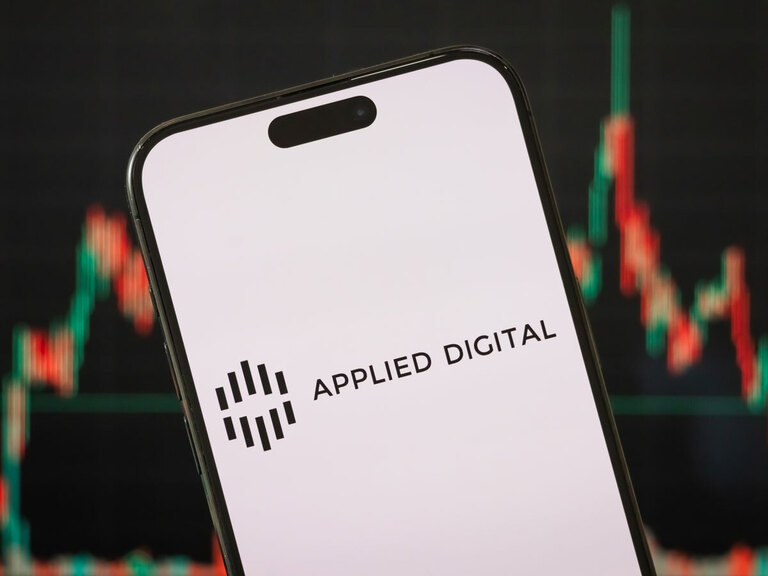The Siren Nasdaq NexGen Economy ETF [BLCN] has been in the money so far this year, propelled by growing demand for cryptocurrency Bitcoin.
The blockchain-focused fund soared 80.4% from $22.57 on 9 April last year to $40.72 on 31 December. So far in 2021, the fund has continued to build momentum, climbing 28.2% to $52.20 on 17 March and sat at $49.80 on 9 April.
The Siren Nasdaq NexGen Economy ETF’s year-to-date total daily return, according to Yahoo Finance, was 22.25% on 12 April. As of 8 April, the fund had net assets of $318.83m.
In comparison, the Amplify Transformational Data Sharing ETF’s [BLOK] year-to-date total daily return was 65.01% and net assets of $1.36bn as of 9 April.
$318.83m
The Siren Nasdaq NexGen Economy ETF’s net assets as of 8 April
Tracking blockchain technology
The Siren Nasdaq NexGen Economy ETF was launched on 17 January 2018 to invest in companies committed to researching, developing or utilising blockchain technologies. It tracks the Siren Nasdaq Blockchain Economy Index.
The Siren Nasdaq NexGen Economy ETF received a major boost from the surge in Bitcoin’s price, which utilises blockchain technology for its transactions. The price of Bitcoin against the dollar had raced 70.7% from $35,566.66 on 11 January 2021 to $60,704.51 on 12 April.
As of 11 April, the Siren Nasdaq NexGen Economy ETF’s top holdings was digital payments firm Square [SQ] with a 1.91% weighting, followed by Silvergate Capital Corporation [SI] with 1.82%, cryptocurrency miner Marathon Digital Holdings [MARA] with 1.81% and software firm MicroStrategy Incorporated [MSTR] with 1.75%.
70.7%
Rise of the price of Bitcoin against the dollar between 11 January and 12 April
Square’s share price has jumped 342% from $59.21 on 9 April 2020 to $261.65 on 9 April 2021. The company benefited from an increase in digital payments during the coronavirus pandemic, which helped fourth-quarter profits rise 52% year-over-year to $804m. Its Cash App offering — which allows users to buy, sell and transfer Bitcoin — recorded a 162% profit leap from the year-ago period.
Marathon Digital’s shares have also raced higher, climbing from $4.28 on 27 November 2020 to $49 on 9 April. The stock benefited from the rally in Bitcoin and recently saw its share price climb after announcing it will launch the first fully compliant Bitcoin mining pool in North America at the end of March, it has continued to climb.
“Bitcoin is now no different than any other strategic or rare-earth commodity,” Atticus Francken, founding member and advisor of the Future of Digital Currency Program at Stanford University, said, according to The Street. He believes Bitcoin has long-term US interest because of the rise in businesses using it as a reserve or a hedge against inflations, as well as for its distributed ledger benefits.
Silvergate Capital, which provides financial infrastructures for digital currency exchanges, has seen its shares climb from $74.31 on 31 December 2020 to $163.20 on 9 April. Meanwhile, MicroStrategy’s shares rose from $388.55 on 31 December 2020 to $1,272.94 on 9 February after it ramped up the value of its Bitcoin ownership to $5bn. However, the stock sat at $711 as of 9 April.
Bitcoin boom or bust?
The Economy Forecast Agency predicts that the price of Bitcoin will reach $160,000 by the end of 2022. The digital payments industry will likely see continued growth in the next two years. Any uptake for supply chains in the retail, healthcare and energy sectors could also lead to increased blockchain use.
According to the World Economic Forum, “10% of the global GDP is predicted to be stored on blockchain platforms by 2027”.
But there are potential barriers ahead. Janet Yellen, US Secretary of the Treasury, could impose regulations on cryptocurrencies and other fintech innovations based on money laundering and terrorism financing concerns. Bitcoin is notoriously volatile and a clamp down on regulations could lead to further swings.
“Given the amazing success all [blockchain-focused] funds have had, it is a little easy to get carried away. Realisation of the boom-and-bust traits of cryptocurrency is paramount to understanding risks involved” - Jacob Kilby
“Given the amazing success all [blockchain-focused] funds have had, it is a little easy to get carried away. Realisation of the boom-and-bust traits of cryptocurrency is paramount to understanding risks involved,” Jacob Kilby wrote in Seeking Alpha.
However, this uncertainty could be a positive.
“While rapidly evolving blockchain technology can provide a discrete digital ledger to track transactions, many advisors remain concerned with the regulation and volatility of cryptocurrency products, indicating that BLCN can be an ideal replacement strategy for clients looking to avoid some of the crypto volatility,” Tom Lydon, president of Global Trends Investments, argued in ETF Trends.
Disclaimer Past performance is not a reliable indicator of future results.
CMC Markets is an execution-only service provider. The material (whether or not it states any opinions) is for general information purposes only, and does not take into account your personal circumstances or objectives. Nothing in this material is (or should be considered to be) financial, investment or other advice on which reliance should be placed. No opinion given in the material constitutes a recommendation by CMC Markets or the author that any particular investment, security, transaction or investment strategy is suitable for any specific person.
The material has not been prepared in accordance with legal requirements designed to promote the independence of investment research. Although we are not specifically prevented from dealing before providing this material, we do not seek to take advantage of the material prior to its dissemination.
CMC Markets does not endorse or offer opinion on the trading strategies used by the author. Their trading strategies do not guarantee any return and CMC Markets shall not be held responsible for any loss that you may incur, either directly or indirectly, arising from any investment based on any information contained herein.
*Tax treatment depends on individual circumstances and can change or may differ in a jurisdiction other than the UK.
Continue reading for FREE
- Includes free newsletter updates, unsubscribe anytime. Privacy policy





